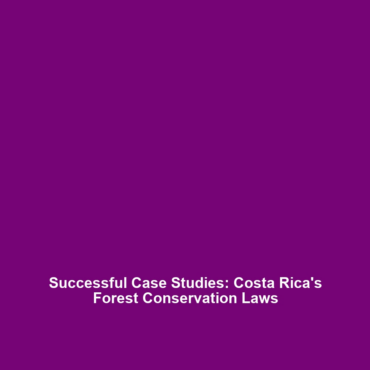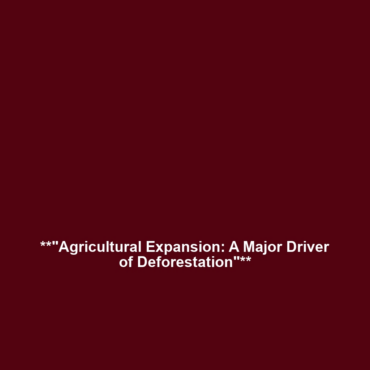The Convention on Biological Diversity (CBD) and Its Targets for Conserving 30% of Global Land and Sea by 2030
The Convention on Biological Diversity (CBD) is a landmark international treaty that aims to promote sustainable development through the conservation of biological diversity. As we face escalating rates of deforestation and biodiversity loss, the CBD’s ambitious targets to conserve 30% of the planet’s land and marine areas by 2030 have become increasingly significant. This article delves into the implications of these targets, highlighting their crucial role in mitigating the ongoing environmental crisis.
Key Concepts of the Convention on Biological Diversity (CBD)
The CBD encompasses several key principles and concepts that aim to address deforestation and biodiversity loss:
- Biodiversity Conservation: The core aim of the CBD is to promote the conservation of the variety of life on Earth, which is critical given the alarming rates of species extinction.
- Sustainable Use: The treaty advocates for the sustainable use of natural resources, ensuring that ecosystems are preserved while allowing for human use and development.
- Benefit-Sharing: The CBD emphasizes equitable sharing of benefits arising from the use of genetic resources, fostering collaboration between developed and developing nations.
Applications and Real-World Uses of CBD Targets
The practical application of the CBD and its targets for conserving land and sea is vital in combating deforestation and biodiversity loss. Here are some notable examples:
- Protected Areas: Many countries are establishing protected areas to meet CBD targets, which help preserve various ecosystems and species.
- Community Engagement: Programs that involve local communities in conservation efforts demonstrate how grassroots involvement can lead to sustainable outcomes.
- Policy Implementation: Implementation of national biodiversity strategies aligns with CBD objectives, enhancing conservation measures and fostering cross-border collaboration.
Current Challenges in Implementing CBD Targets
Despite its noble goals, the CBD faces several challenges and limitations in its implementation:
- Lack of Funding: Insufficient financial support remains a significant barrier to effective conservation measures.
- Political Will: Varying levels of commitment among nations hinder collaborative efforts and the achievement of conservation targets.
- Data Gaps: Inconsistent and inadequate data on biodiversity limits effective policy-making and conservation strategies.
Future Research and Innovations Related to CBD
Research and innovation will play a crucial role in achieving the CBD’s targets for land and sea conservation. Key areas of focus include:
- Remote Sensing Technology: Advancements in remote sensing can enhance monitoring and reporting on biodiversity changes and habitat loss.
- Climate Resilience Studies: Research into how ecosystems respond to climate change will inform adaptive management strategies for conservation.
- Community-Driven Solutions: Innovations that empower local communities to participate in biodiversity conservation are essential for sustainable practices.
Conclusion
The Convention on Biological Diversity (CBD) and its targets for conserving 30% of global land and sea by 2030 represent a critical effort in the fight against deforestation and biodiversity loss. As we work towards these objectives, collaborative action, innovative research, and increased funding are essential. To stay informed about the impacts of these initiatives and engage in conservation efforts, explore more about related topics such as protected areas and community engagement initiatives.


